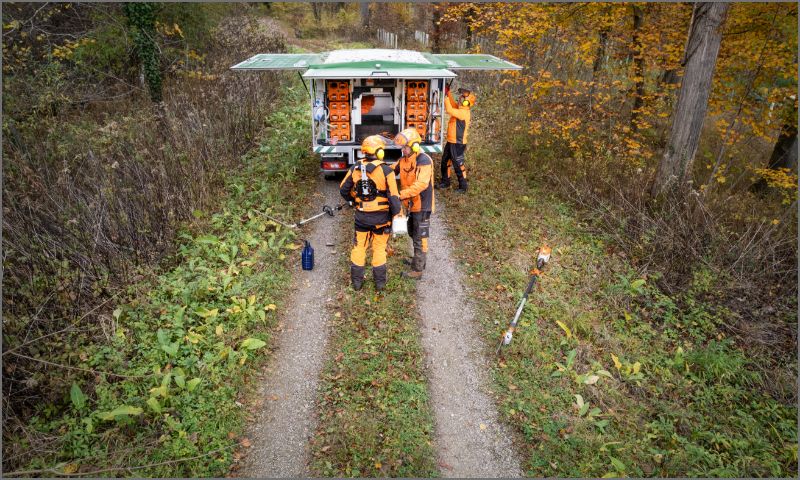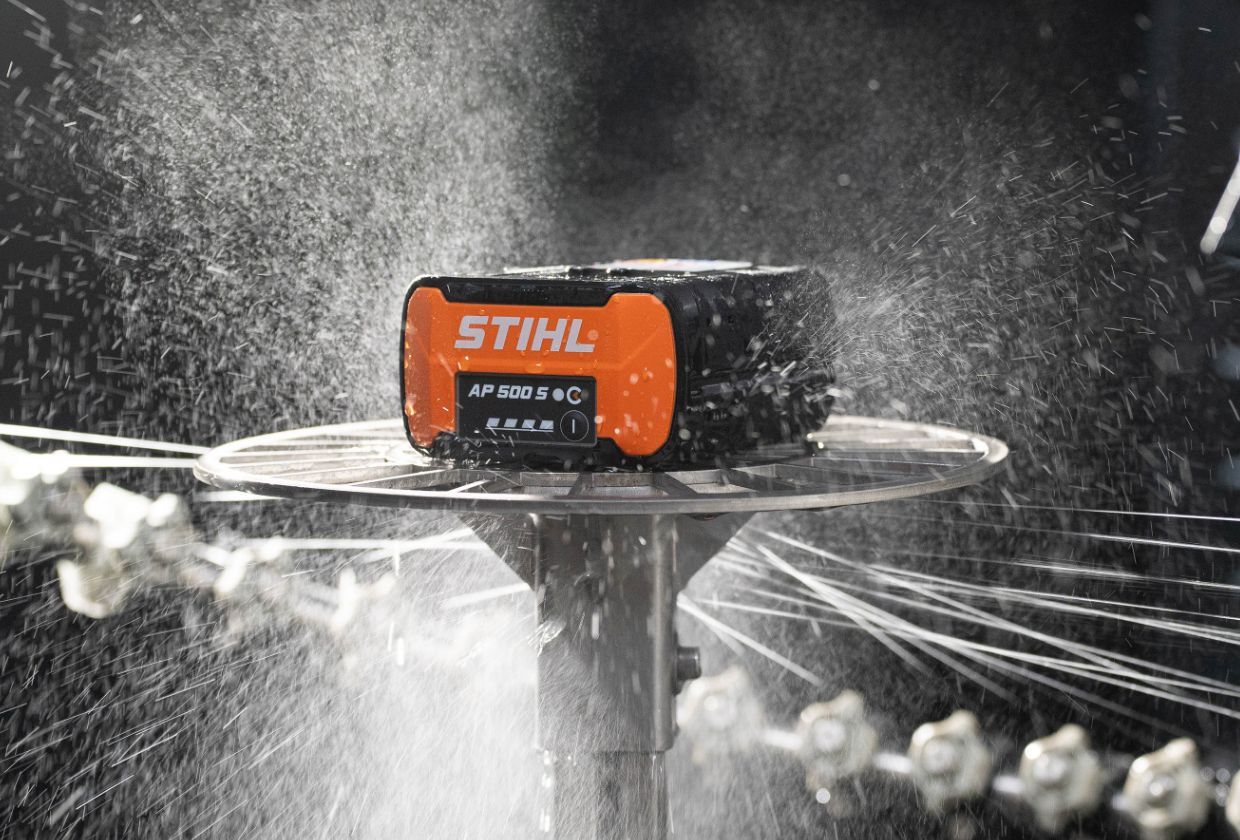Forst Baden-Württemberg, or ForstBW, manages 330,000 hectares of forest in the German federal state of Baden-Württemberg. Along with harvesting wood, the foresters also focus on forest maintenance, which can be a physically challenging task. However, innovative approaches are set to change that in the future. In a groundbreaking pilot project, ForstBW foresters are testing the possible uses of the latest battery-powered tools and charging infrastructure from STIHL.

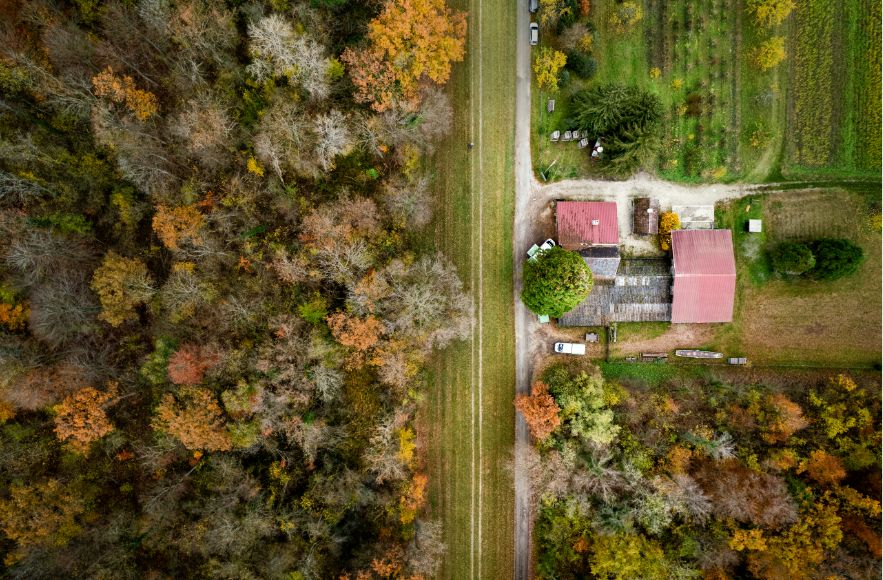
A small, rustic wooden hut lies in the middle of the Upper Rhine Plain, with red checkered curtains in its windows. Gathered around the hut are five men in work clothes with striking black and orange colors, the kind you associate with ForstBW, the state forestry service of Baden-Württemberg. Next to the foresters is an open van loaded with a generous selection of orange-colored STIHL batteries, tools, and charging management solutions, which comprise the mobile charging infrastructure for the battery-powered devices.
“We can plug the van into the socket in our workshop. That way, we can charge the batteries overnight,” says one of the men. His name is Lothar Ziser, and he belongs to a group of foresters involved in a pilot project by ForstBW and STIHL. Since May, he and his colleagues have been testing how well STIHL’s charging infrastructure and battery-powered tools work in professional forestry.
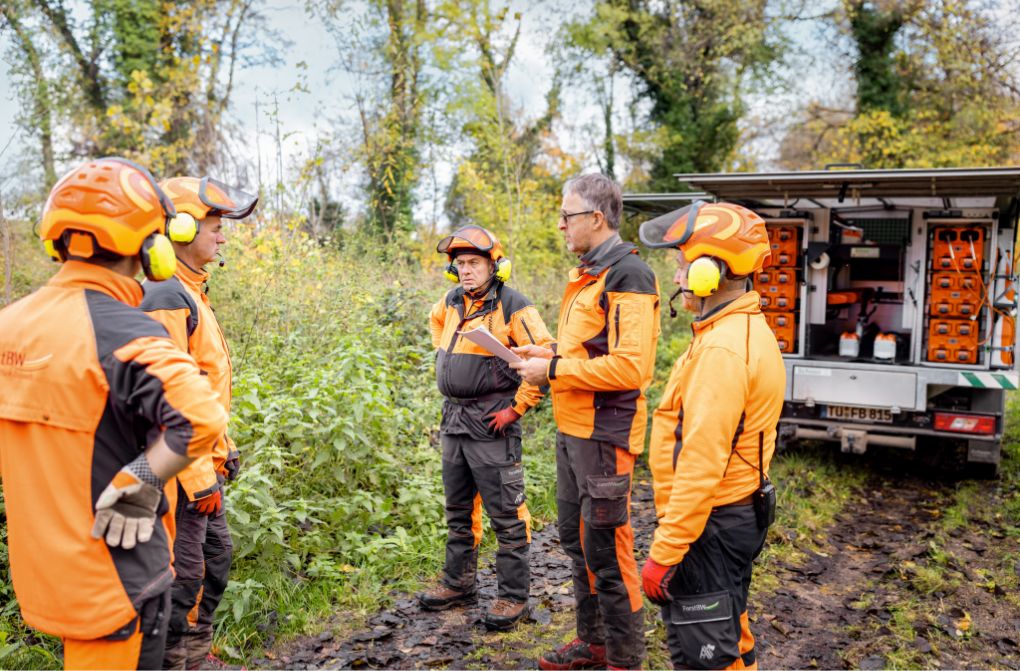

PROFESSIONALS DISCUSS NEEDS
The initial talks between STIHL and ForstBW began in November 2022. “We discussed the technical requirements for forestry work and how they can best be met with battery-powered technologies rather than gasoline-driven tools,” says Konrad Leicht, project manager at ForstBW. “STIHL and ForstBW worked together to select a range of STIHL battery-powered tools and charging infrastructure that draws on the familiar world of combustion engines while also bringing something new to the table.”
Battery-operated tools have significant advantages over gasoline-driven ones, including less noise and fewer vibrations, something that the foresters find very positive. They are also impressed with the STIHL ADVANCE X-TREEm HT forestry harness in combination with the STIHL HTA 150 battery-powered pole pruner. The setup enables the tool to be clicked into an attached flexible strap on the harness so that the tool’s weight is distributed across the body, while retaining significant freedom of movement. When it comes to protecting new growth – an area that was previously dominated by the gasoline-powered clearing saw with shredder blade – the foresters appreciate the agile HLA 135 K battery-powered long-reach hedge trimmer. These aspects are now set to make working life in forestry much easier.
The forestry service cares deeply about the pilot project with STIHL. “ForstBW believes that battery technology will become the standard in forestry in the short to medium term,” Leicht says. “The tools and the ways of working with them already have the potential to be deployed successfully in professional forestry services.”

»We used to do everything with gasoline-powered tools, but we’re much happier with the battery-powered units.«
ForstBW Forester


330000
HECTARES OF FOREST
are managed by ForstBW in Baden-Württemberg.
The employees were skeptical at first, he recalls. Their concern was whether they could actually handle their tasks without using gasoline. “Because STIHL ’s gasoline-powered tools are very good and efficient, my colleagues were concerned about replacing them with battery-operated products,” Leicht says.
Another concern was that the batteries may run low quickly, meaning that work would be constantly interrupted. These reservations quickly turned out to be unfounded. “In the past, the foresters also had to keep refilling the gasoline tools,” Leicht says. “Now they go to the charging station and just change the battery, which lasts quite a long time.
If the foresters spend a longer period in the forest, they always have the required spare batteries on hand in combination with the STIHL ADVANCE X-Flex hip belt as part of the modular harness system and the easily clippable battery carrying bags.”
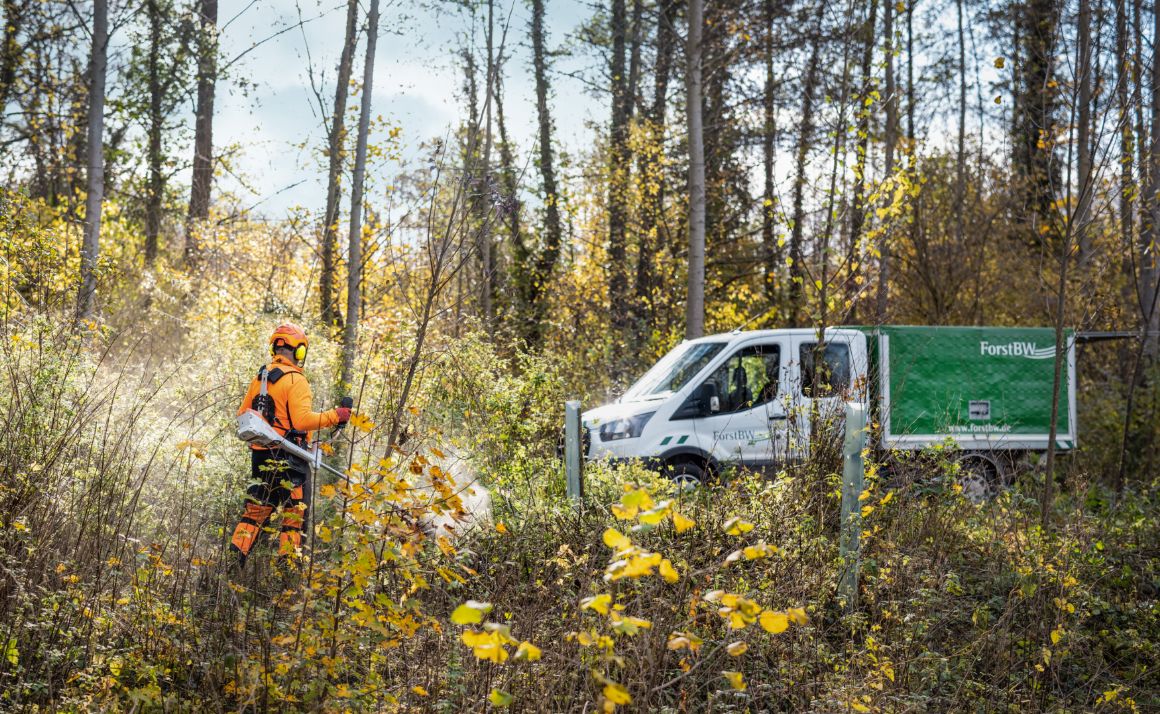


»Our objective was to cooperate with our users to find out which advantages STIHL’s battery technology can bring to their everyday work.«
Project Manager at STIHL
FIELD-TESTING BATTERY-POWERED TOOLS
The team loads the battery-powered tools they need into the van. Their next job takes them even deeper into the alluvial forest areas of the Upper Rhine Plain, where the paths become narrower and muddier. At the edge of the forest, they keep coming across all kinds of hand-carved wooden figures, including giraffes, a chimney sweep, and an elephant. Suddenly, the van stops. The men get out, strap on black and orange STIHL harness systems, put on their headsets, and equip themselves with tools such as battery-operated saws, brushcutters, and pruners, some of which are three meters long. “We wear the headsets for safety reasons so that we can communicate with each other at a distance in the forest and warn each other of dangers,” Ziser says.
The men get to work. Instead of the usual buzzing of chainsaws, only a slight whirring can be heard. It’s pleasantly quiet – much quieter than if typical saws with combustion engines were being used. “We used to do everything with gasoline-powered tools, but we’re much happier with the battery-operated ones. Among other things, they’re lighter and their performance is great too,” Ziser says enthusiastically.
Ziser begins working on a set of young beech trees. “We carry out maintenance and restoration work, plant new vegetation, start new forests, and harvest wood,” he says. “The battery-powered tools are ideal for maintaining existing young trees and new trees starting to grow,” says forester Alexander Dick.
»The tools and procedures using battery technology already have the potential to be deployed successfully in professional forestry services.«
Project Manager at ForstBW
But was the switch from gasoline to battery power in the professional sector really that easy? “I was skeptical at first,” Dick says. “But I have to say I’m pleasantly surprised. The battery-operated tools are very powerful and comfortable to use, especially since they’re so quiet. You can hear the birds chirping and you can communicate better with your colleagues.” The results so far show that battery power is actually better than combustion engines in some areas of forestry work and has a number of advantages. In addition, the usual activities performed with gasoline-powered tools can now be carried out using battery-operated ones without any interruptions and without changing work processes, with the batteries always fully charged and easily available.
»The battery-powered tools are ideal for maintaining existing young trees and new trees starting to grow.«
ForstBW forester


STIHL LEARNING WITH USERS
Michael Varga is a project manager at STIHL and oversees the ForstBW project: “Our objective was to cooperate with our users to find out what benefits STIHL’s battery technology can bring to their everyday work. The project has showed that it’s possible to replace combus tion engines with STIHL battery power in ForstBW’s forestry work.”
STIHL is learning a lot from the partnership, says Varga. The knowledge gained from the project will allow STIHL to enhance products where required and adapt them to the needs of users, he adds. “The foresters know from their own experience what they need or don’t need,” Varga says. “Their feedback is crucial.” The principle, as he describes it, is “from the user for the user.”
STIHL is supporting ForstBW by visiting them, documenting findings, and recording their feedback. “All data is carefully analyzed and goes toward enhancing battery-powered products and the charging infrastructure,” Varga says.
Dick takes the opportunity to make a request: “The battery-operated tools are currently still at a disadvantage when faced with thicker diameters during tasks like harvesting wood.” He is hoping for a solution using electric power soon. STIHL already has this point on its agenda. “Using battery technology to harvest wood is a challenge, but it holds tremendous potential for us as well,” Varga says.

ForstBW manages the forest in the state of Baden-Württemberg, which covers a total area of 330,000 hectares. The total area is divided into 21 districts spread across the entire state. On average, a single district comprises between 13,000 and 17,000 hectares of forest, with around 20 to 40 foresters being employed in a forest district.

